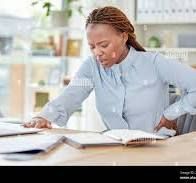Mind Body Rest Program: An in depth look at part of Relief Rise
Relief Rise begins with a Mind-Body approach with veteran therapist, Cindy Perlin, LCSW

Cognitive Behavioral Therapy (CBT) is a form of psychotherapy that focuses on identifying and changing negative thought patterns and behaviors. It is based on the principle that by altering unhelpful thoughts and behaviors, individuals can improve their emotional well-being and manage various mental health conditions, such as anxiety, depression, and stress
.
Cognitive Behavioral Therapy (CBT) for pain management focuses on changing the way individuals perceive, respond to, and cope with chronic pain. It operates on the understanding that the experience of pain is influenced by psychological factors, including thoughts, emotions, and behaviors. Here's how CBT is used to help manage pain:
- Reframing Negative Thoughts: CBT helps patients identify and challenge unhelpful beliefs about their pain (e.g., "This pain will never improve") and replace them with more realistic and empowering thoughts.
- Developing Coping Strategies: Patients learn practical tools to manage pain-related stress, such as relaxation techniques, mindfulness, and problem-solving skills.
- Behavioral Activation: CBT encourages patients to gradually re-engage in activities they have avoided due to pain, which can improve mood and reduce disability.
- Reducing Catastrophizing: Many people with chronic pain tend to catastrophize, expecting the worst outcomes. CBT addresses these thought patterns to reduce anxiety and feelings of helplessness.
- Improving Emotional Regulation: Patients learn to manage emotions like frustration, anger, or sadness, which can increase pain.
- Building Resilience: By focusing on strengths and enhancing self-help skills, CBT helps patients feel more in control of their pain and overall life.
Studies have shown that CBT can reduce the intensity and distress associated with chronic pain, improve quality of life, and decrease reliance on medications. It is often used alongside other treatments as part of a comprehensive pain management plan.
Biofeedback-Assisted Relaxation Training is a therapeutic technique that combines biofeedback, which uses sensitive electronic instruments that measure physiology and feed back that information to the patient, with relaxation practices to help individuals learn to control physiological processes that influence pain and stress. It is particularly effective for managing chronic pain by fostering awareness and regulation of the body's responses to stressors.
How It Works:
- Biofeedback Monitoring: Sensors are placed on the body to monitor physiological functions such as muscle tension, heart rate, skin temperature, and breathing patterns. This data is displayed in real-time on a screen, giving individuals visual or auditory feedback about their body's activity.
- Relaxation Techniques: Patients use relaxation strategies, such as deep breathing, meditation, or positive imagery, to intentionally modify their physiological responses, like reducing muscle tension or slowing heart rate.
- Training and Control: Over time, individuals learn to recognize physical cues of stress or pain and practice relaxation techniques to bring their physiological responses under voluntary control, even without the biofeedback equipment.
Application for Chronic Pain:
- Reducing Muscle Tension: Chronic pain, especially in conditions like migraines, fibromyalgia, or back pain, is often associated with muscle tension. Biofeedback helps patients relax muscles, reducing pain intensity.
- Lowering Stress and Anxiety: Chronic pain is exacerbated by stress. Biofeedback teaches patients to manage stress responses, which can decrease the overall experience of pain.
- Improving Autonomic Functioning: By regulating functions such as muscle tension and skin temperature, patients can improve their body's natural ability to cope with pain. It also gets the patients’ body out of the fight or flight response, a state which suppresses the body’s ability to maintain and repair itself.
- Empowering Self-Management: Biofeedback fosters a sense of control, enabling individuals to actively participate in managing their pain, rather than feeling helpless or overly reliant on medications.
This approach is non-invasive and has shown effectiveness as part of a comprehensive pain management plan, often combined with therapies like Cognitive Behavioral Therapy (CBT) or physical rehabilitation.
Energy Psychology (EP) Is a group of methods designed to improve physical, mental, emotional and spiritual wellbeing. EP methods focus on your thoughts, feelings and emotions while you activate some aspect of the bio-energy system of the body. This usually involves tapping or touching certain places on your body, such as meridian points or chakras. This calms the body, clearing stress and trauma that are held there. The result? It's easier to move on and break through to a more expansive experience of life.
Energy Psychology and Chronic Pain:
- Trauma Connection: Research and clinical observations suggest that unresolved trauma often plays a significant role in chronic pain conditions. Trauma can dysregulate the nervous system, creating patterns of hyperarousal and stress that cause or increase pain. Energy psychology aims to address these underlying traumas to alleviate pain.
- How It Helps Chronic Pain:
- Reduces Emotional Stress: Techniques in energy psychology target stress and emotional pain, which can exacerbate physical pain.
- Improves Nervous System Regulation: By calming the stress response, energy psychology helps the body transition from a heightened state (fight or flight) to a relaxed state (rest and digest), which is essential for healing.
- Releases Somatic Memories: Chronic pain often has a somatic component, where trauma is "stored" in the body. Energy psychology can help release these physical manifestations of emotional pain.
- Empowers Patients: Individuals are taught self-help tools, fostering a sense of control over their symptoms.
- Applications: Energy psychology is often used as part of an integrative approach to chronic pain management, addressing both physical symptoms and the emotional and psychological factors that may perpetuate them.














